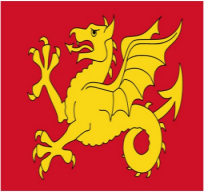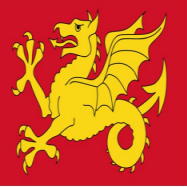G8JNJ
About
- Username
- G8JNJ
- Joined
- Visits
- 4,628
- Last Active
- Roles
- Member
- Points
- 127
Reactions
-
Home Brew Broadband Magnetic Loop
Hi Ron,
The reduction in IP products with improved amplifier balance are likely to be mostly 2nd order products.
One trick you could try is to place a 1:1 voltage balun (a pair of bilfilar windings with the end of winding one connected to the start of winding two ) across the amplifier input with the center tap to ground. You may need to experiment with the number of turns and type of ferrite but this is likely to be just as effective (and easier to construct) as an isolating input transformer with a grounded center tap on the secondary (amplifier input) side.
Regards,
Martin - G8JNJ -
Participation of Kiwis in the TDoA process
This thread covers splitting GPS feeds.
http://forum.kiwisdr.com/discussion/comment/3949#Comment_3949 -
Participation of Kiwis in the TDoA process
Another success today - I emailed Esteban, EA8DGL, and asked if he could enable his GPS as he's in a great location for TDoA in the Canary Islands just of the West coast of Africa.
He very kindly did this today and he's now appearing on the TDoA map :-)
The other good news is that he's just got his Amateur licence and permission to put a better antenna up, so hopefully reception will soon be even better.
My thanks to Esteban for doing this.
If anyone else feels like emailing other KiWi owners in key locations that would be very helpful too.
Maybe we should compile a 'hit' list ?
Regards,
Martin - G8JNJ -
Participation of Kiwis in the TDoA process
"How does anyone feel about the possible addition of a limit to how many receivers may run TDoA"
Seems like a sensible idea to me.
There may also be potential political problems in some countries e.g. if a KiWi on 'their' territory is used to TDoA military facilities.
On a similar subject - I notice that users IP addresses are now no longer shown on the KiWi GUI (they may still be logged) but just the approximate location instead. I think this is sensible too.
Regards,
Martin - G8JNJ -
TDoA Successes
-
TDoA Successes
-
TDoA Successes
-
TDoA Successes
-
TDoA extension operating notes
Some further notes that may help folks who are trying to use this extension.
There are still quite a few bugs to be sorted out, but I have been able to get very accurate locations, certainly close enough to be able to find the TX site on Google Earth & Street View
e.g.
https://www.google.co.uk/maps/@51.8090686,3.8966839,3a,60y,246.34h,90.69t/data=!3m6!1e1!3m4!1sUQvXw0TenHFOgXCRkkrKQA!2e0!7i13312!8i6656
Brief 'How To' based on my experience so far.......
I find that in order to get consistent results, if I make any major changes to the setup of the signal being detected, I have to refresh the browser and reopen the TDoA extension
Set the mode to I/Q and reduce the bandwidth to just cover the target signal.
Then set the SDR map to cover the target area, be careful not to 'nudge' the frequency on the waterfall whilst doing this.
Check each KiWi you are intending to use can hear a clean signal by double clicking on the KiWi 'flag' on the map, before adding it to the list
Choose KiWi's carefully. You can use KiWis much closer together for signals on the lower frequencies typically <5MHz. But for higher frequencies you need to use KiWi's much further apart in order to ensure that each KiWi is the correct 'skip distance' away from the likely signal source
TDoA works the best if you can choose SDR's that are approximately the same distance away from the likely source of the transmission
Ideally the SDR's should be chosen as opposing pairs, either side of the likely source of the transmission, for example one North and another to the South, a further pair to the East and West would then give the best results.
If all of the SDR's are on one side of the likely source of the transmission, the results can be ambiguous, so it is always best to experiment with different SDR's in order to find the ones that give the clearest indication.
Northern Europe is fairly well covered but Southern Europe is not. More TDoA KiWi's in places like Portugal, Spain, Tenerife, Ascension Island, Azores and Africa are required
Once running the sampling should only take 40 seconds at most.
I suspect that the process can fail if one of the previously chosen KiWi's becomes too busy, or looses GPS lock in the time between initial selection and actual sampling.
If the sampling phase takes longer than 1 minute, refresh the browser and start again.
Once the sampling has finished it may take several minutes to get a result back from the server.
If the server running Octave can't get a good correlation it will also fail, sometimes without an error message and it just keeps trying.
If the TDoA running phase hasn't finished after 5 mins, refresh the browser and start again.
I usually start with just 3 KiWi's to get a rough location and then zoom in as required. Take a look at the maps from pairs of KiWi's and delete the KiWi's that that don't provide good clear contours from the list, then add somenew ones and try again.
Sometimes it may take two or three attempts to get a good map back.
If you don't get good clear results, try running it a few more times, as sometimes the propagation is not favourable during a sampling run, but may improve on subsequent ones.
I have tried it with AM, RTTY, STANAG, SSB and other digital modes, including some short duration burst type signals, and with perseverance have managed to get good results. The only type of signal I have had difficulty with has been Morse.
Regards,
Martin - G8JNJ -
Direction Finding and linking existing KiwiSDRs
Hi John,
Excellent and very timely :-)
There is currently a problem with a military FSK signal in the 40m amateur band that folks have been trying to ID. I ran a TDoA on it this morning and was able to narrow down the likely transmitter site fairly accurately (given the number of KiWi's currently listed.
So a big thanks to all concerned especially John, Christoph, linkz and others who have managed to make this work.
I don't think I'm overstating it when I say that this is likely to be a real game changer, especially when trying to ID unknown or interfering signals and makes what would previously have been only within the capability of national regulators or the military available to everyone.
This is truly ground breaking.
Regards,
Martin - G8JNJ





